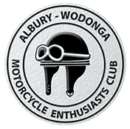EVOLUTION OF THE CLUTCH
HD tech expert takes a closer look at another vital part of your bike – this time, the clutch
Words by Lemmy

A Harley-Davidson® Big Twin’s clutch is an integral part of the motorcycle. It’s different from that of many other bike models in that it lives in a special case on the side of the motorcycle, and has for many years. And the clutch on a Big Twin is very, very large. The reasons for that are established in the clutch’s evolution. The humble clutch is arguably one of the most interesting – and important – parts on the motorcycle, owed in part to its efficacy.
Very early Harley® twins were direct-drive. The engine spun the rear wheel directly, by way of a leather belt. You can identify these machines from a long way away because the pulley on the rear wheel is quite large; it’s nearly the same diameter as the wheel itself! Riders would use a lever on the left side of the tank to apply tension to the belt and drive the bike forward. When tension was removed, the engine would spin and the belt simply sat as the pulley spun, preventing the engine from stalling.
In 1912, Harley-Davidson began offering a clutch so the engine could be left free running without relying on manual belt tension. Soon thereafter, other innovations began taking advantage of that clutch such as a two-speed transmission that mounted to the rear wheel hub, and the really thrilling development – a three-speed sliding-gear transmission, which made its debut in 1915. Guaranteed by the factory to travel at 100km/h, the motorcycle to which these transmissions were fitted look pretty familiar. This is due in part to the clutch, which lived under a chain case on the left side of the motorcycle in about the same place it resides today.

The clutch could be operated by that familiar hand lever used on the leather belts, but was also connected to a pedal that could be operated by the left foot. The pedal controlled a metal rod that served as a linkage running back to the clutch. Unlike the common pedal-activated clutch found in a car, early H-D® clutches are of a rocker design. Instead of returning when released, like the clutch pedal found in most automobiles, the rocker clutch utilises a cam-over design which ensures that the clutch stays engaged or disengaged as the rider desires. This same general layout was carried over to the four-speed transmission in 1936.

That system of operation began to dictate many things about Harley-Davidson motorcycles, affecting design and layout all the way through to the present day. Riders became used to using their left foot when decoupling the engine from the rest of the driveline and then switching gears with the left hand, using a lever on the left side of the tank.
In 1952, H-D® took some cues from the aftermarket and developed the modern foot-shift divide; the ratcheting shifter racers were using for lightning-fast gear changes. This new technology meant the left hand and foot switched tasks: the hand activated the clutch, and the foot changed the gears, just as it’s done today. Harley-Davidson reworked its clutch linkages for greater mechanical advantage using an assembly called the clutch booster. The ‘mousetrap’, nicknamed for its similarity to the mechanical device, allowed the massive clutch to be operated with a strong hand initially and settling into a nice easy hold at full actuation.

And there lies the secret as to why the clutch is so large: the design was so effective, no one wanted to scrap it. Originally designed for the large muscles of a leg, engineers designed linkages with different geometry to adapt it to the weaker muscles of the hand. Other motorcycle makes don’t have such a long riding legacy, so most feature clutches designed for hand operation long after H-D made it the norm. The massive clutch continued to prove itself for decades – the same basic design was used right up into the mid-’80s!

However, there’s another reason the design stuck around.
H-D eventually moved to cable-actuated clutches to transfer the rider’s hand movement at the lever, ultimately arriving at the clutch. These proved to be a bit more forgiving in terms of their placement and path. Later, the Motor Company fitted their Big Twins with hydraulically actuated clutches, which offer lower resistance and can better cope with the routing demands of fully-loaded tourers.
Prior to cable and hydraulic actuation, though, H-D used solid metal round stock for its linkages, which were simple to manufacture and very, very strong. That metal rod – the linkage – operated best when it had a nice, straight path to the clutch release lever. This was so imperative that the mousetrap discussed earlier was designed to use similar linkages and attachment points that the foot clutch once used.
The unique Harley-Davidson engine layout, divorced transmission, and backwards compatibility with earlier motorcycles that did not have electric starting has led them to have a fairly enormous clutch pack. The location, which is different than most other motorcycles, is a hallmark of the breed and is a testament to the sound, clean engineering which riders still enjoy today. Some might argue that it still is.
The large size lends itself well to a motorcycle engine that creates stump-pulling torque, and the solid, effective layout was simple and rugged. Your Big Twin’s clutch is like the rest of your bike: large and strong, steeped in tradition and with a story all its own. When you peer into your derby cover, be proud you’re looking at a part that’s undergone over a hundred years of refinement and unintentional durability tests by a long line of riders just like you.
